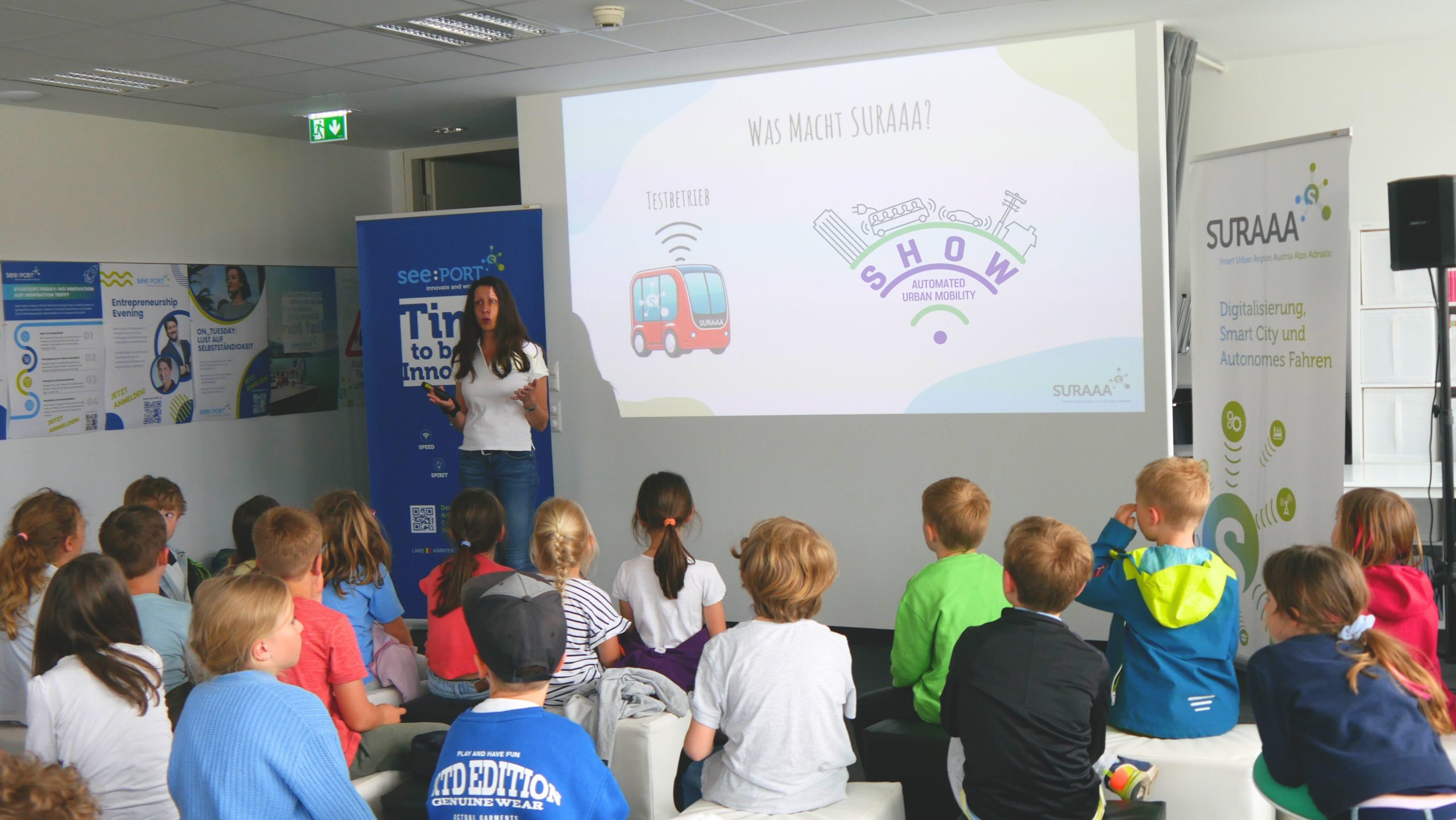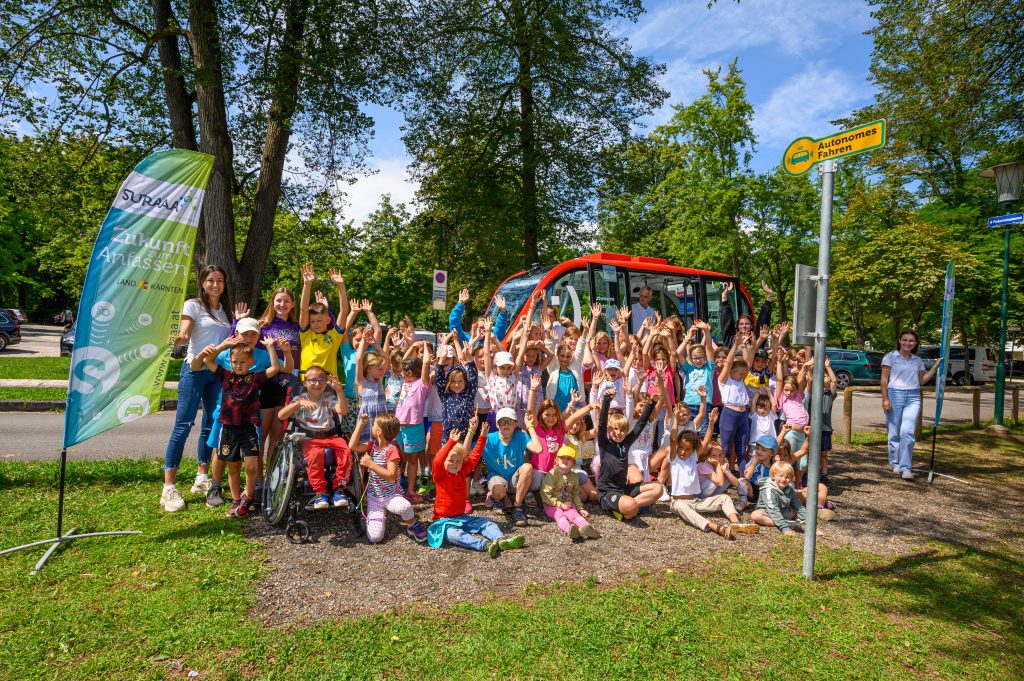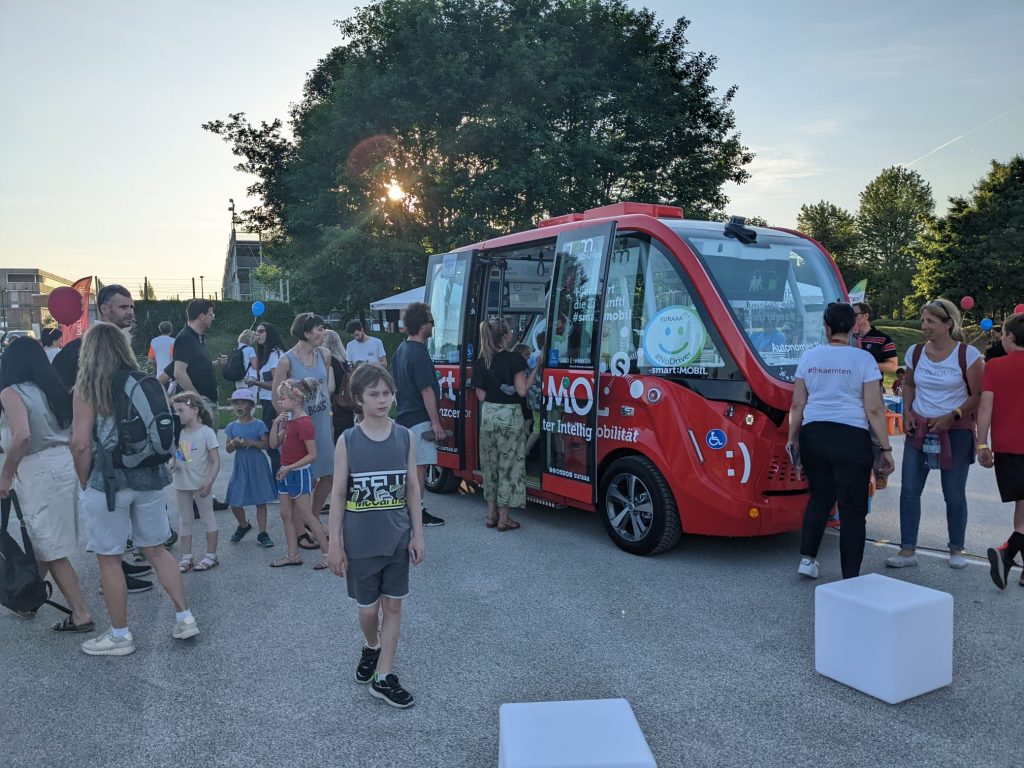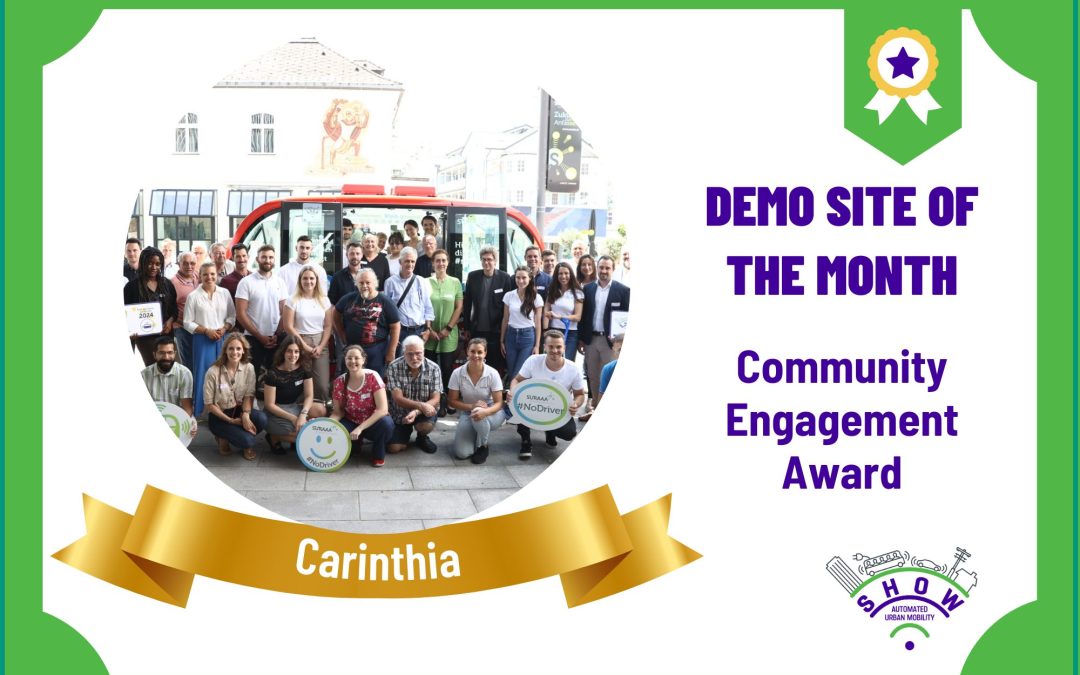
Recognising the great work that is being done by the sites, SHOW has launched the SHOW Demo Awards. Each month, one site will receive a well-deserved spotlight, highlighting what has been done to advance mobility in the region.
The ‘Community Engagement Award’ goes to…. Carinthia! The award highlights the achievement of our partners in Carinthia: pdcp/SURAAA, AIT (the Austrian Institute of Technology), ioki, AustriaTech and Yunex Traffic. The name of the award says it all: under the helm of SURAAA, a very strong and committed community was built through the organisation of many events and activities, truly showing citizens how automated mobility can advance mobility in the region.
When speaking about community engagement, many other pilot sites in SHOW deserve honorary mentions. Like Carinthia, they have put huge efforts into engaging users, together with them exploring the world of automated mobility and how it can help them in their daily lives. Check here some great examples from Linkoping, or Karlsruhe.
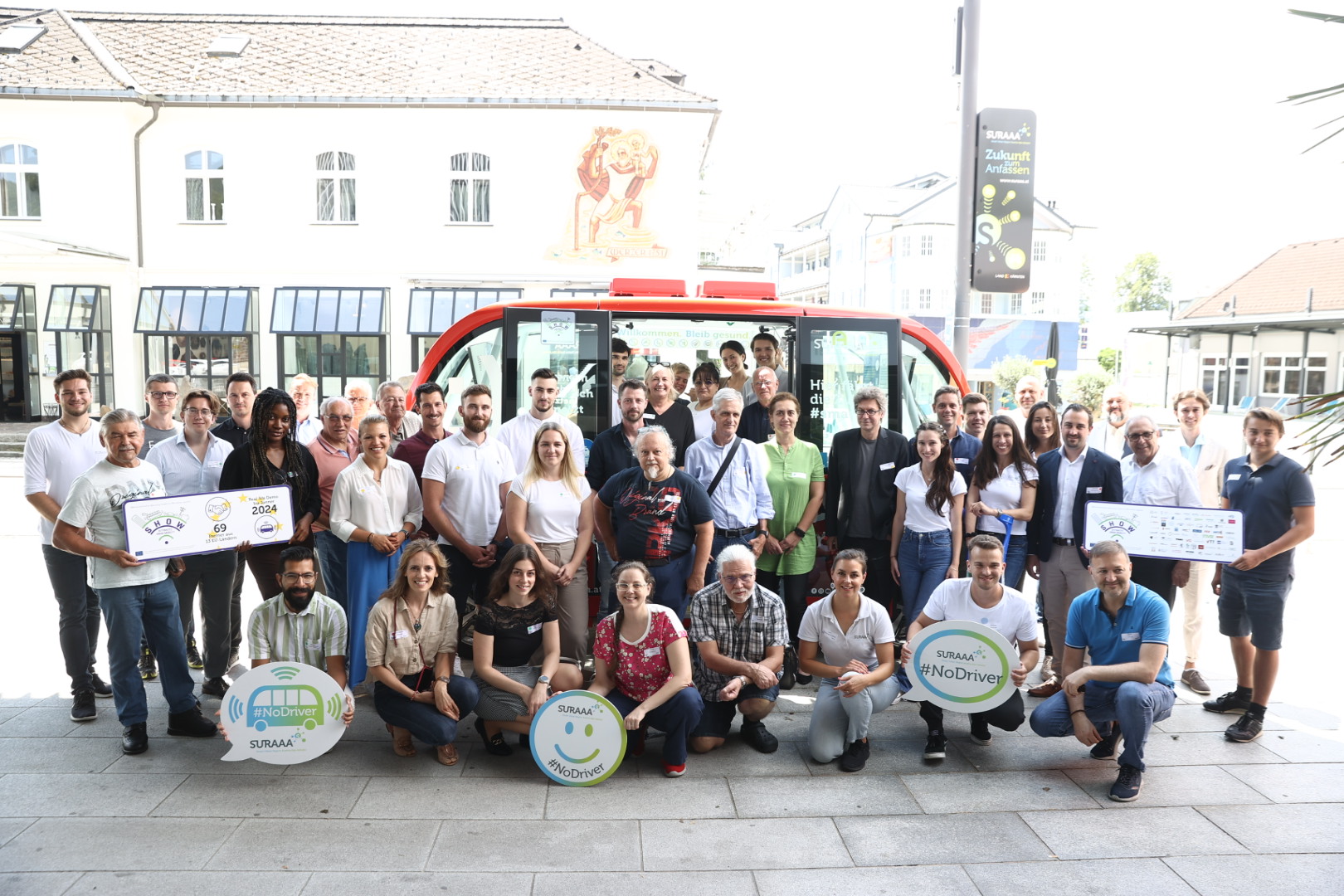
Now, let’s hear it from our partners! We spoke to Petra Schoiswohl, Project Manager at SURAAA (Smart Urban Region Austria Alps Adriatic), about why community engagement has been so pivotal to the pilot.
Can you explain in what ways demo site Carinthia has engaged the community? And is there any event or activity you would like to highlight?
pdcp / SURAAA has engaged the community through a variety of events aimed at familiarizing the public with the SHOW project and autonomous transport technology. These include among other things workshops and meetings with experts, stakeholders and citizens, partner, press and public events, public showcases and demos, competitions, delegation visits, and presentations at fairs. There were also special events for children, students, seniors, administration, economy and people with disabilities. Notably, the project has been showcased extensively, providing opportunities for people to interact with the autonomous shuttle firsthand, ask questions, and even experience rides. Some that stood out were:
Ideathon
The Ideathon is an ideas competition that captures and records participants’ ideas and visions on the topic of mobility of the future in the form of concepts. Together with experts participants could work out new solutions, which users would want, and which solutions will prevail. We created a workshop for about 50 participants from all areas of life and ages and engaged them in the following challenges:
- How can public transport be combined with autonomous on-demand services?
- How should autonomous shuttle systems be designed to enable contactless use (via app)?
- How can the transportation of small goods and people be combined as good as possible?
In the afternoon participants pitched their ideas in front of investors and representatives of business and administration. The audience was able to rate the pitches digitally. The 3 winning teams received €500 each.
Kids.DAY
The SURAAA Team invited 50 kids with 5 accompanying adults to test the shuttle. Needless to say the kids were very excited and soon enough a long queue formed to hop on the shuttle for a test ride. The kids were engaged in questions around the shuttle and had the opportunity to give the shuttle a name and to color a picture of the shuttle. Questions from the children for example included:
- What happens when you encounter a wrong-way driver?
- Does the shuttle stop for an ant?
It was a very exciting and successful day for the children and the SURAAA Team. We not only had a nice time with the kids, but also gathered valuable information for example how to board an electric wheelchair for children.
According to you, why is engaging the community and passengers so important for automated mobility?
Engaging the community and passengers is crucial for the acceptance and integration of automated mobility solutions. As autonomous driving technology is still relatively new, there is a natural apprehension and fear associated with it. Community engagement initiatives play a vital role in familiarizing people with this technology, providing them with information, and building confidence in its safety and reliability. It’s important to integrate the community and let them experience the shuttle first hand. Preconceptions and worries can be addressed at fairs, within shuttle rides, at workshops and interviews. It’s valuable to give them a sense of co-creation and involvement in matters regarding the shuttle. An automated shuttle service should enhance and be an integral part of the community. Only when it is at the forefront of everybody’s mind, the shuttle will be used to its full extend and it will find its place in each users life.
Comparison for Austria: the acceptance for automated mobility is at the demo site Carinthia around 73%, and in Austria as a whole it is around 52%. This comparison shows how important it is to engage the community and passengers.
Can you tell us a bit more about the demo: the timeline, how many passengers have used the service, future steps?
The timeline of the demo has been marked by consistent efforts to introduce and familiarize the public with autonomous transport technology. Since its inception in 2021, more than 6000 passengers have utilized the service, indicating growing interest and acceptance within the community. The project will run until September 2024 and our focus will be on integrating autonomous shuttles into the public transportation system, potentially through the addition of on demand transport. With the establishment of a dedicated control center for autonomous shuttles, the operation of buses can be managed remotely, eliminating the necessity for onboard operators. An autonomous fleet and automated on-demand operation will be used for the first time in Austria.
